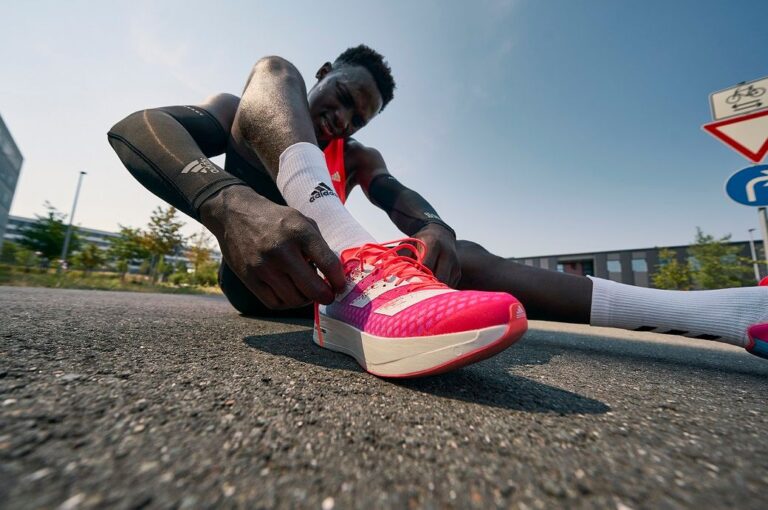
[ad_1]
Adidas’ consolidated currency-neutral sales grew by 1 per cent in FY22, boosted by growth in all market segments, except Greater China, the company said in a press release.
From a category perspective, currency-neutral revenues in performance grew at a strong double-digit rate in FY22, while lifestyle revenues declined. In euro terms, the company’s revenues increased 6 per cent in FY22 to €22,511 million, compared to €21,234 million in FY21.
German sportwear giant Adidas has posted 4 per cent growth in its e-commerce revenue in financial year 2022 (FY22), driven by double-digit growth in North and Latin America. However, the company’s own retail revenues remained flat compared to the prior year level. The company’s own direct-to-consumer business also grew by 2 per cent in FY22.
From a market perspective, the company saw a double-digit rate growth in Latin America and North America, while revenues in Europe, Middle East, and Africa (EMEA) were up by 9 per cent, despite the wind-down of the company’s business in Russia. However, revenues in Asia-Pacific grew by only 4 per cent, and in Greater China, revenues declined by 36 per cent due to the challenging market environment, company-specific challenges, and significant inventory takebacks.
Adidas’ gross margin decreased by 3.4 percentage points to 47.3 per cent, due to the strong increase in supply chain costs, reflecting increased product costs and freight expenses.
The company’s other operating expenses increased by 15 per cent to €10,260 million in FY22, while marketing and point-of-sale expenses increased by 8 per cent to €2,763 million. Despite the increase in marketing spend, the company’s operating profit decreased by 66 per cent to €669 million, and consequently, the operating margin decreased by 6.4 percentage points to 3 per cent compared to the prior year level of 9.4 per cent.
The net financial result also decreased, with financial expenses up by 110 per cent to €320 million, mainly driven by increasing interest rates as well as currency effects. The company recorded a net financial result of negative €281 million.
Adidas reported a net income from continuing operations of €254 million, indicating an 83 per cent decrease from the prior year level. The decline was partly related to one-off costs in the amount of €350 million.
In the fourth quarter (Q4) of FY22, the currency-neutral revenues of Adidas declined by 1 per cent year-on-year (YoY). This was largely attributed to the termination of their partnership with Yeezy. The company’s gross margin was reported at 39.1 per cent, which is indicative of the increased supply chain costs and higher discounting that the company had to shoulder. Consequently, the company incurred a €724-million operating loss and a €482 million net loss from continuing operations.
Looking ahead to the FY23, the company expects their currency-neutral revenues to decline at a high-single-digit rate. Additionally, the underlying operating profit is expected to be at around the break-even level. This is due to the expected sales loss of around €1.2 billion, and a corresponding negative operating profit impact of around €500 million from potentially not selling Yeezy stock. Moreover, the company is expecting a reported operating loss of €700 million, including an additional negative impact of €500 million from potential Yeezy inventory write-off and up to €200 million in one-off costs, the release added.
“2023 will be a transition year to build the base for 2024 and 2025. We need to reduce inventories and lower discounts. We can then start to build a profitable business again in 2024. Adidas has all the ingredients to be successful. But we need to put our focus back on our core: product, consumers, retail partners, and athletes. We will work on strengthening our people and the adidas culture. Motivated people and a strong Adidas culture are the most important factors to build a unique Adidas business model again,” said Bjorn Gulden, CEO of Adidas.
Fibre2Fashion News Desk (DP)
[ad_2]
Source link